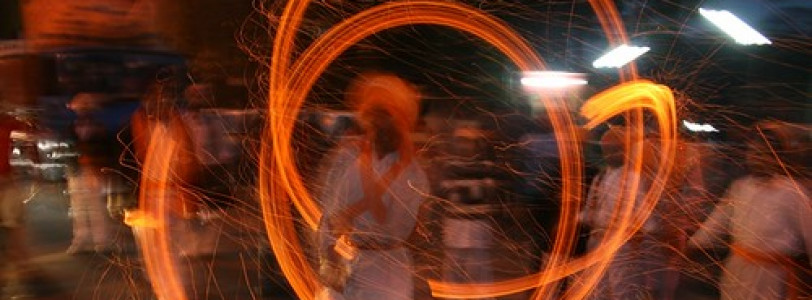Dongzhi Festival (China and Taiwan)
A celebration that occurs on the winter solstice, the shortest day of the year in the Northern Hemisphere, the Dongzhi festival (translated to "the arrival of winter") has a long history. Said to date back to the Han Dynasty (202 BC - 220 AD), the festival began as a week-long holiday that allowed officials to travel back to their families to hunker down for the bitter winter, celebrating their ancestors and worshipping ancient deities. It is still an important national holiday today. Much of the reverence for the solstice is based around the philosophy of Yin and Yang, and the belief that during this time of winter there is too much Yin energy. To make up for this, people will eat foods with high Yang energy, as determined by Chinese medicinal cuisine principles. People in the North will traditionally eat dumplings, whilst those in the South would make tangyuan, a dish of glutinous rice flour served with hot broth or syrup. This dessert symbolises family unity, which is the cornerstone of the Dongzhi festival.
Yennayer, Amazigh New Year (North Africa)
The Amazigh New Year is celebrated by Amazigh people spread out across several countries in North Africa. Amazigh can either be pluralised to Imazighen or the Berber people. Yennayer is the first month of the Amazigh calendar (2097 is their equivalent of 2021). Celebrations begin on Thabbourth Aseggas, the final day of the year, and consist of family gatherings and the playing of traditional festive music. Cultural clothing and jewellery will also be worn. The celebrations are themed around the connection between human beings and nature. Nature was deified in the ancient Amazigh culture, and celebrating it during the new year symbolises the cycle of rebirth that is present in all living things. Food is a major part of the festival. Couscous made from seven vegetables and seven spices is prepared, and each member of the family is encouraged to eat to their heart's content; a full belly at the start of the year begets a full belly throughout. The origin of the festival is unknown, although an Amazigh folktale describes a tenacious old woman who took her goat out to graze during the Black Nights of Yennayer. Offended by this lack of fear, Yennayer borrowed an extra day from the next month along, in order to make the woman suffer another day of winter. Because of the celebration's theme of rebirth, many people will time pivotal moments in their lives to coincide with the festivities, including weddings.
Reykjavik Winter Lights Festival (Iceland)
This festival takes place during the darkest days of the darkest month in Iceland, which is February. The Aurora Borealis, at this time of year, in this part of the world, is localised all over Iceland, although it's best viewed in places like Reykjavik. In fact, the northern lights are so easy to spot here that the winter festival incorporates them as part of its annual tradition. The entire city comes alive during the festival, with streets lined with bright decorations, including a light display illuminating the already gorgeous Hallgrímskirkja (Church of Iceland). Museums and thermal pools open their doors to the public. All events are free, as according to the Visit Reykjavik website the "Winter Lights Festival is to be enjoyed by all". It's one of the prettiest festivals in one of the most beautiful cities in the world.
Lohri (India)
Lohri is a festival of fire mostly celebrated in the Northern part of India and the Punjab region. Bonfires are constructed in towns and cities, with communities gathering around them to celebrate the passing of the winter solstice and the return of spring. Popular music is played on radios, speakers, and instruments. In rural areas, the day marks a celebration of a new harvest, and the stretching out of days. Good food and snacks like rewri, gur, and gajak are passed, with some bits and pieces being thrown on the fire as a symbolic offering to express gratitude for the previous year's blessings. The fire is kept burning all throughout the night as a way to encourage the end of winter and the return of warmth. In Punjab especially, the festival holds a religious significance, with many people viewing it as a time when their prayers are more likely to be answered, and will walk around the bonfire chanting their hopes for the coming year.









0 Comments